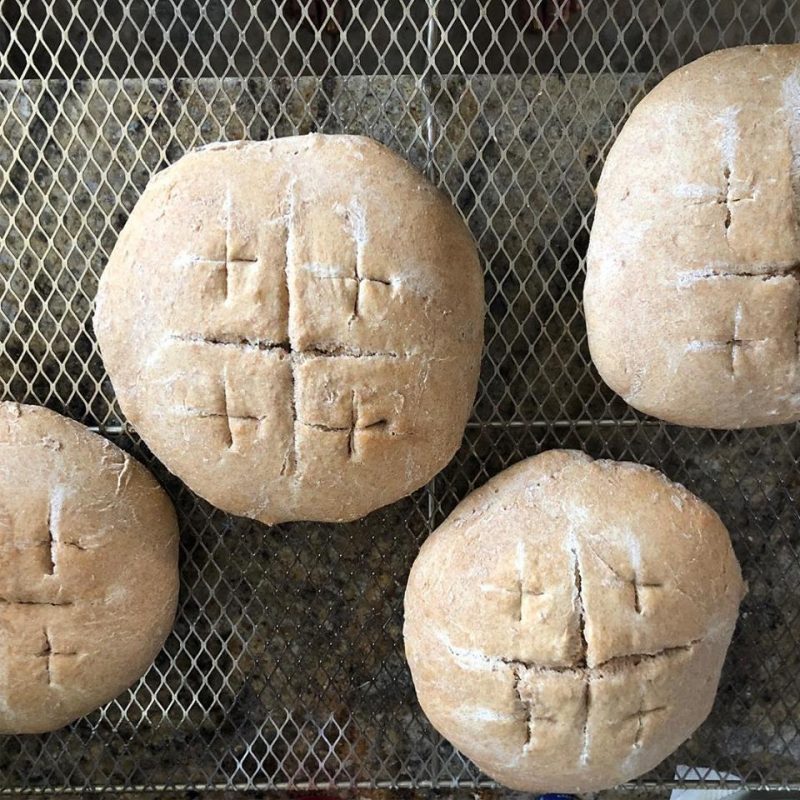A few weeks ago, in the midst of the vicissitudes of this particular winter, our parish had our annual meeting, our first together. The meeting was centered within the liturgy of the Eucharist: We opened the meeting before the procession, we announced the slates of candidates at the announcements in the midst of the service, and we shared communion with each other around the altar rail. We sang the recessional hymn and removed to our parish hall, where we then shared a potluck meal much in the same way I imagine the early church might have (without the Corelle ware and the Tupperware). Gathered in fellowship, we concluded our business, and then concluded our Eucharist.
Our current Book of Common Prayer, still charmingly called “new” even though forty years old, centered the Eucharist as the principal liturgy of our Sunday worship. Thus it seemed
only natural to center our meeting in the same way, for it is the Eucharist that draws us together each week and is the foundation of our relationship as a community.
But it also brings us to a question: what does it mean to live a Eucharistically-centered and Eucharistically-shaped life? The 20th century Anglican liturgical scholar Dom Gregory Dix held in his work The Shape of Liturgy that there was a four-fold action at the heart of the service of communion: offering, blessing, breaking, and then sharing communion.
And that should sound right, when we reflect on it. When describing the last supper in Mark’s gospel, listen carefully to the verbs in this sentence: “And as they were eating, he took bread, and blessed and broke it, and gave it to them, and said, ‘Take: this is my body’” (Mark 14:22). The verbs are similar: taking, blessing, breaking, and giving. The same verbs are used in the same order in the feeding of the multitudes, and in the encounter at Emmaus with the risen Christ in Luke 24:30-31.
Notice that the bookending verbs are taking and giving– the very same necessary rhythm of life that we repeat with every breath. Both the taking and the giving are necessary in living our lives at both a basic biological level and at a spiritual level. In the middle is the blessing and the breaking open. This seems to be the recipe for life itself—the good life of which the philosophers debated in ancient Greece and today, and which Jesus himself repeatedly modelled for us and even now calls us to embrace.
The shape of the Eucharist is the shape of a life well-lived. It is both holy and earthy. Further, it is a life shaped profoundly by thanksgiving, by gratitude, by an awareness and mindfulness of this life as a blessing.
These are the attitudes and values that form us as a community, across time and geographical distances. Each time we gather for communion, we offer our gifts, which are then taken onto the altar—mundane, simple things like bread and wine, yes, but also we offer what we value—our monetary offerings and offerings of our selves: our time and our talents for the common good. Those offerings are then blessed, consecrated, made holy through the power of the Spirit to help empower us as disciples, both individually and as a community. Those gifts are then broken open—barriers and boundaries fall, so that true sharing can take place. And then those gifts are given back, yet somehow enlarged, made greater than their constituent parts.
And so it is with us: as individuals we go about our daily lives, but as Christian disciples in this community, we do more: we witness to the glory of God, nourished and strengthened for embodying the way of Jesus, reminded and re-membered through our joining together around this altar each week, asking God to take us, bless us, break us open, and give us for the life of the world. And these values answer and put us in service to the empty and hurting places of the world around us. May we be bold enough to embody the Eucharistically-shaped life of our shared communion and community out into the world.

